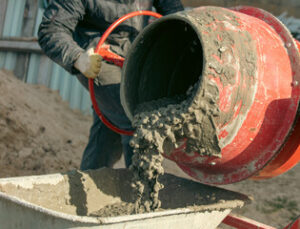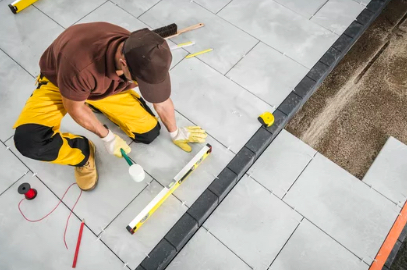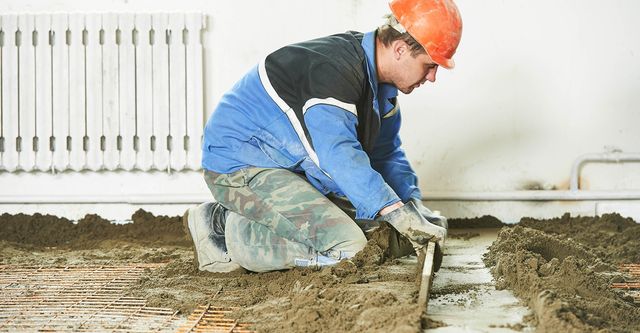The concrete curing process is essential for developing strength and durability in concrete structures. Curing involves controlling moisture loss from the concrete and maintaining desired temperature conditions for extended periods.
To achieve this, the exposed concrete is covered with insulating blankets or plastic sheeting that is saturated with water. The coverings are then secured with bricks or other heavy materials, and soaked again daily. Click here at https://concretecontractorcoloradosprings.com/ to learn more.
 Preparatory Work
Preparatory Work
Concrete curing is one of the most important steps in ensuring that your finished project has its desired strength and durability. If it’s not done properly, you’ll face a host of problems, including cracking, shrinkage, and surface damage.
To cure the concrete, it must be kept moist for some time, and this can be done in several ways. The most common method is to simply water the concrete consistently. Another option is to use a curing compound, which can be applied with a spray or brush to the concrete. Finally, you can also use plastic sheets or membranes to prevent the concrete from drying out.
It’s essential to remember that the hydration process for concrete takes days and sometimes weeks. The concrete must be cured for a long enough period for it to reach its full potential in terms of strength and durability.
If the concrete isn’t cured correctly, it will have a rough texture and will be less resistant to wear and tear. It will also have a lower resale value and may be at risk of structural failure.
When you’re constructing concrete, it’s critical to take the time to prepare the site and follow all of the proper curing techniques. Not only will this ensure that your project is completed on time, but it will also ensure that your concrete has the maximum strength and durability possible.
The most important thing to remember about concrete curing is that it’s an ongoing process. The concrete needs to be continually watered and covered to prevent moisture loss. It’s also necessary to monitor the temperature of the concrete to avoid freezing. For this reason, it’s often best to use a curing blanket or membrane to keep the concrete warm and prevent it from freezing. This will also help to reduce the amount of evaporation from the concrete, which can cause it to lose strength and durability over time. This is especially important when you’re constructing concrete with a high water content. This type of concrete will need more time to cure than other types.
Pouring The Concrete
Concrete is poured into forms to build a variety of different structures. Whether it’s a driveway, patio, or sidewalk, a good quality concrete mix is vital to ensure the final product is strong enough to serve its purpose. A concrete mix is a combination of cement, water, and aggregates that are stirred together before pouring. The cement helps the concrete set and provides tensile strength, while the aggregate provides durability. There are many options for the type of aggregate used in concrete, from recycled products to natural stones. In addition, the type of cement can affect how long it takes for the concrete to set and harden.
Once the concrete is poured, it must be allowed to cure. This process allows the concrete to reach its full strength and prevents any potential cracking. It also helps the concrete last longer and resist damage from the environment.
The curing process involves ensuring the concrete remains moist for an extended period. This is done by keeping the concrete damp with various methods, including spraying and covering it.
During this time, the cement is hydrating, allowing it to form calcium silicate hydrate, which gives the concrete its strength. The hydration process can take days, even weeks, so it’s important to keep the concrete moist for as long as possible.
It’s crucial to avoid starting your project on days when there’s a chance of heavy rain. When rain washes into the concrete, it will wash away some of the cement and reduce its strength. This can lead to the concrete cracking and becoming brittle over time.
If the concrete is exposed, it must be protected from the sun’s heat to prevent excessive moisture loss. This can be done by covering it with plastic sheeting or a wet curing blanket. Wet curing blankets are a popular choice for concrete projects because they keep the concrete moist and are easy to clean.
A well-maintained construction site is essential for a smooth and safe job. The concrete workers need to be organized and on the same page, so they can move quickly to complete the work. This will prevent any errors or misunderstandings that can cause problems down the road.
Curing The Concrete
Concrete curing is the process that takes place right after the concrete has been poured and finished. It involves the maintenance of desired temperature and moisture conditions both at depth and near the surface for extended periods. It enhances the hydration of cement and thereby develops the concrete’s strength, durability, water tightness, and wear resistance.
The concrete must be properly cured to achieve its design strength. Concrete that is not properly cured can have significant drying shrinkage cracking, which leads to poor appearance and reduced durability. Proper curing helps to reduce these drying shrinkage cracks and improves the surface of the concrete, allowing it to resist abrasion and erosion.
Moisture is required for the cement hydration reaction to continue and form a hydrating gel of calcium silicate. Proper curing controls the loss of this water by slowing evaporation, keeping it close to the surface of the concrete, and optimizing its rate of strength development.
Several methods can be used for curing concrete, such as heated enclosures, special curing compounds, and evaporation reducers. In cold weather, the curing process is much more complicated because of the increased speed at which moisture is lost from the concrete. To counter this, several techniques can be used such as fogging and sun/windscreens.
It is important to start the curing process as soon as possible after the concrete has been poured. If left unprotected, the concrete will dry too quickly, resulting in poor strength development and surface defects such as flaking and spalling.
The length of the curing process will depend on several factors including the temperature, concrete mix proportions, size and shape of the overall concrete, and weather conditions. Typically, the concrete must be cured for 28 days before it can be used. In some cases, it may take longer than this to reach its designed strength. This can be a problem if the structure is going to be subjected to heavy loads. If this is the case, it may be necessary to construct temporary supports.
Finishing The Concrete
When it comes to concrete construction, the curing process is a critical part of the work that needs to be done. It refers to the maintenance of desirable temperature and moisture conditions in the concrete, both at its near and in-depth surface, for a specified time after placement to ensure hydration, strength development, resistance to thawing and freezing, volume stability, and abrasion. This is one of the most important things that need to be done to achieve good quality concrete and a strong, long-lasting structure.
While working on a concrete project, it is important to remember that the curing process is a chemical reaction and requires optimal conditions for it to take place. This means that you should not disturb or damage the concrete in any way until the chemical reactions have had the opportunity to complete themselves. This is one of the reasons why it is important to hire a skilled and trained concrete finisher who can properly time their finishing work. It takes years of training and experience to develop the ability to expertly “time” the concrete curing and finishing processes.
A common method of curing concrete involves spraying the concrete with water. This is usually used for flat surfaces like concrete floors and pavements, but can also be useful for vertical structures such as columns. Another common curing method is ponding, which involves submerging the concrete in water. This is often used for larger concrete elements that have large exposed surfaces compared to their depth, such as roads and bridges.
In addition to spraying and ponding, it is also common to use wet coverings to help keep the concrete moist. These can include burlap, cotton mats, and rugs that are saturated with water to prevent loss of moisture. If the weather is particularly hot, a plastic cover can be used to protect the concrete from sunlight and excessive heat.
While it is possible to use concrete for light foot traffic 3 to 4 days after placement, the full strength of the concrete will not be reached until 28 days after the time of pouring. Once the concrete has cured for a sufficient amount of time, it can be used for pedestrian and vehicle traffic.


